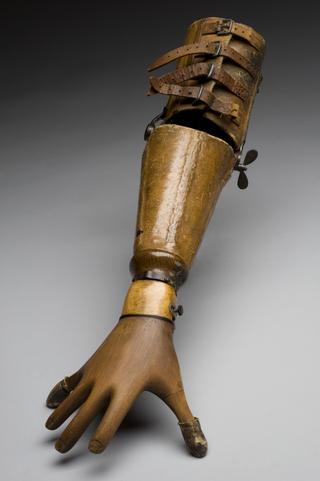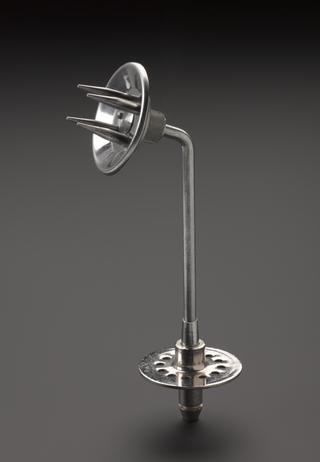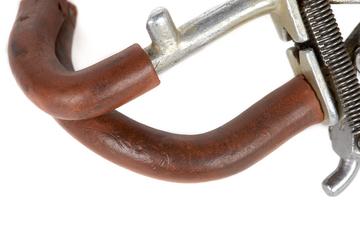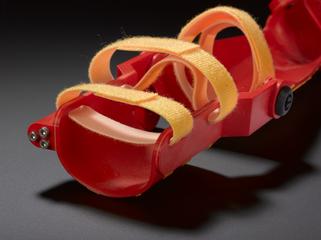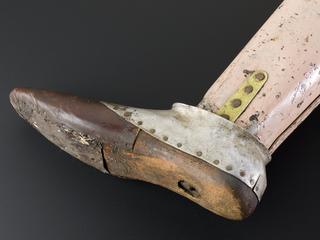
Artificial right leg, Roehampton, England, 1934
- Made:
- 1934 in Roehampton


















Metal right above knee leg prosthesis, believed to have been issued to an individual who had lost a limb during the First World War, 1914-1918. The limb shows evidence of extensive home-made attempts to repair the socket, using a variety of materials and was originally made Hanger, c.1934.
This artificial leg was made for someone who had their knee amputated above the knee and is believed to have been issued to and individual who had lost his limb during the First World War (1914-1918). Largely made of light metal, it was probably issued to replace a wooden limb, as had originally been supplied to wartime amputees.
The limb shows signs of extensive home repairs, particularly above the knee joint. Artificial limbs are very personal items and many wearers would always put comfort above aesthetics. These repairs suggest the lengths some people will go to keep a limb they feel comfortable with. String, nails, wires and gaffer tape have all been used.
The leg was made by Hanger, an American company established in 1861 by James Edward Hanger, an engineering student who became one of the very first amputees of the American Civil War (1861-1865). During the First World War, they were one of a number of American companies who set up workshops at Queen Mary’s Hospital in Roehampton, the main centre for limb-fitting in Britain. They were brought in as the existing British limb-making industry was unable to cater for the large influx of new amputees.
Details
- Category:
- Orthopaedics
- Object Number:
- 1999-483
- Measurements:
-
overall (fully extended): 852 mm x 410 mm x 230 mm,
- type:
- artificial leg
- credit:
- Richmond Twickenham and Roehampton Healthcare NHS Trust
